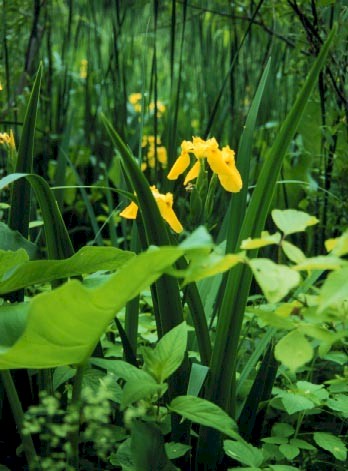
Yellow Irises are beautiful plants that grow in both freshwater and brackish wetlands. They are native to central Scandinavia south to Turkey and North Africa. Because they are so attractive, they were likely imported as a garden plant. Thomas Jefferson grew this iris at Monticello in Charlottesville, VA before 1771. But like many garden plants, they can grow in natural wetlands and marshes, and in the 1860s they were reported on the Delaware River, in the Hudson River Valley, and in the Chesapeake Bay region (Washington and Baltimore) by the early 1900s. These days they grow in wetlands and marshes in 40 states, and are only absent, for now, in some plains and mountain states. They were reported in the San Francisco Delta by 1968 and by 1980 in Columbia River wetlands. Even though they are so widespread, few negative impacts have been reported, which is surprising given that these plants are toxic to some grazers like livestock. But in most locations, they are not abundant and are frequently trampled and killed by high densities of livestock. Their toxicity may be more problematic for native grazers because they can replace edible native plants.